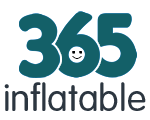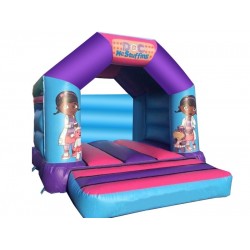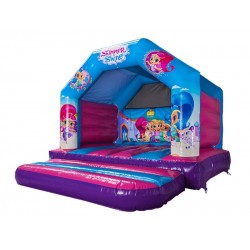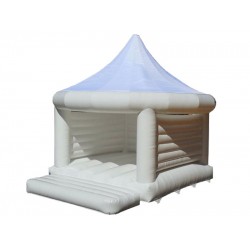Maximizing Performance: How to Use Your Inflatable Blower Correctly

Proper use of an inflatable blower is crucial for ensuring the safety, efficiency, and longevity of your inflatable equipment. Whether you're setting up a bounce house, slide, or any other inflatable structure, following the correct procedures for using your blower can make a significant difference. Here are the essential steps and tips for maximizing the performance of your inflatable blower.
1. Choose the Right Blower
Ensure that you are using a blower that is appropriate for the size and type of inflatable you are setting up. Check the manufacturer's recommendations for blower specifications and match the blower's power and airflow capacity to your inflatable's requirements.
2. Inspect the Blower and Cords
Before each use, inspect the blower and its electrical cords for any signs of damage or wear. Look for frayed wires, cracks, or other issues that could pose a safety hazard. Do not use the blower if you notice any damage; instead, repair or replace the affected parts.
3. Set Up on a Level Surface
Place the blower on a flat, stable surface close to the inflatable's air intake. This helps ensure efficient airflow and reduces the risk of the blower tipping over during operation. Avoid setting up the blower in muddy, sandy, or wet areas to prevent debris from being sucked into the motor.
4. Secure the Inflatable
Before turning on the blower, make sure the inflatable is properly anchored to the ground. Use stakes, sandbags, or other securement methods to keep the inflatable stable. This prevents movement that could cause damage to the blower or the inflatable itself.
5. Connect the Blower to the Inflatable
Attach the blower's air output to the inflatable's air intake securely. Ensure there are no gaps or loose connections, as this can lead to air leakage and inefficient inflation. Most inflatables come with straps or ties to fasten the blower's nozzle in place.
6. Power Up the Blower
Plug the blower into a grounded electrical outlet that meets the blower's power requirements. Turn on the blower and monitor the inflation process. The inflatable should begin to take shape and fully inflate within a few minutes. Keep an eye on the blower to ensure it is operating smoothly and without unusual noises or overheating.
7. Regular Maintenance
Regularly clean and maintain your blower to keep it in optimal working condition. Remove any debris or dust from the blower's intake and exhaust vents. Periodically check and replace the blower's air filters if applicable. Proper maintenance helps extend the blower's lifespan and ensures consistent performance.
8. Safety Precautions
Always follow safety guidelines when using an inflatable blower. Keep children and pets away from the blower during operation. Do not leave the blower unattended while it is running. Ensure that the blower is turned off and unplugged before performing any maintenance or adjustments.
Conclusion
By following these steps and best practices, you can maximize the performance and longevity of your inflatable blower. Proper use and maintenance not only enhance the efficiency of your inflatable setups but also contribute to the safety of all participants. Always prioritize safety and adhere to the manufacturer's guidelines to get the most out of your inflatable blower.




Leave a Comment